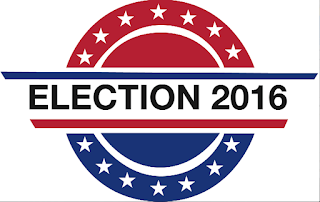US Presidential Election History
240 years ago, barely a month before the signing of the U.S.
Constitution on September 17, 1787, delegates to the Philadelphia
Convention assigned the Council of Eleven with the task of formulating a
mechanism for the election of the President of the United States of
America.
The eleven men of the council had to devise a system that will at once
protect the rights of the smallest states and defend against the
influence of foreign governments while still adhering to the will of the
majority. It was a difficult task, but the Council of Eleven managed to
create a multi-tiered voting system called the College of Electors,
modeled after the Centuriate Assembly of the ancient Roman Republic.
On November 8, 2016, the United States will use the almost two-and-a-half century-old Electoral College
system for the 56th time to elect its 45th President. The newly elected
president will be sworn in on January 20, 2017, which will also be
President Barack Obama's last day in office.
How will the president be elected? Basically, a presidential candidate
needs to win at least the majority, or 270, of the 538 Electoral College
votes to be elected president.
The Electors of the Electoral College are distributed proportionally to
every state and Washington D.C., equaling the number of its delegation
to the U.S Senate and House of Representatives (Article 2, Clause 2,
U.S. Constitution).
The Electoral College votes of each state are pledged in whole to the
presidential candidate with the most votes in their respective states
during the general election – with the exception of Nebraska and Maine,
which distribute votes proportionally by Congressional districts.
Apart from the politically unaffiliated George Washington, the first
president, all subsequent American presidents were members of the
Federalist (1), Whig (4), Democratic-Republican (4), Democratic (15) and
Republican (18) parties. After the demise of the first three parties,
the Democratic and Republican parties have dominated every presidential
election from 1853 to now – and it will be no different in this election
cycle.
The nominees of the big two are not the only contenders though. Other
notable presidential candidates include former New Mexico governor Gary
Johnson (Libertarian Party) and Jill Stein (Green Party). There are
also, as of April 2016, another 3,778 other candidates who have
registered their candidacy with the Federal Election Commission.
The 2016 presidential election will ultimately end up as the costliest
in history. A few analysts have predicted that direct campaign spending
for the primaries and general election will ultimately cross the $5
billion mark, eclipsing even the 2012 contest between Barack Obama and
Mitt Romney.
US Presidential Election History
US Presidential Election History
US Presidential Election History
US Presidential Election History
US Presidential Election History
US Presidential Election History
US Presidential Election History
US Presidential Election History
US Presidential Election History
US Presidential Election History





































